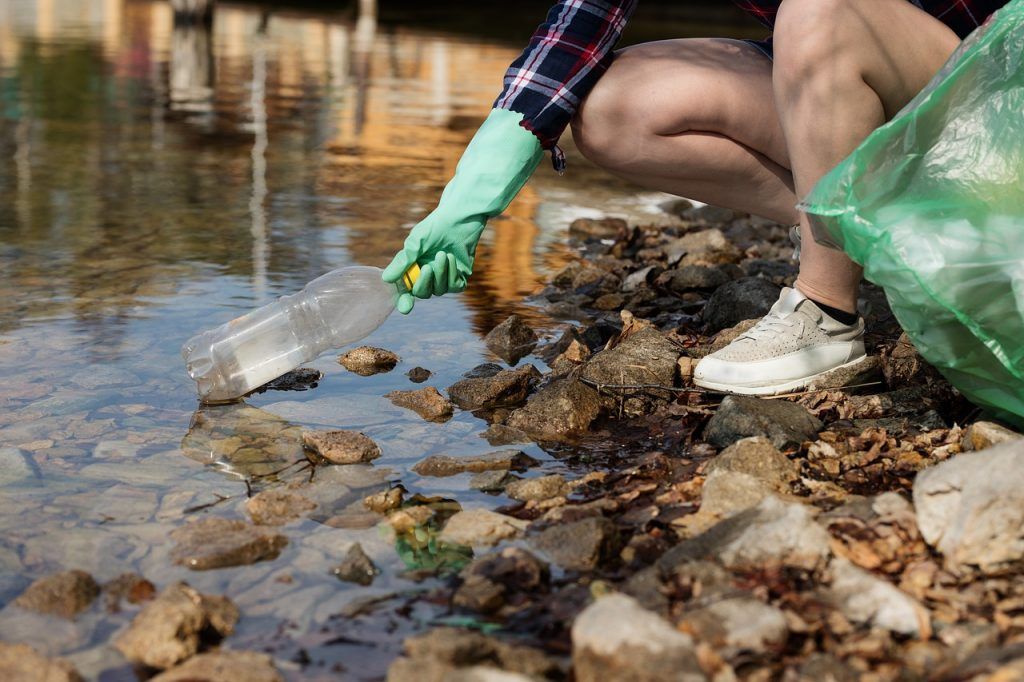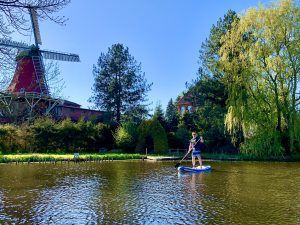SUP is a sport that is particularly popular in the hot summer months. The number of paddlers in Germany has increased significantly in recent years. Stand up paddling has become a real trend sport. More and more people are buying a SUP board. The fact that the sport is becoming more and more popular and that there are more and more opportunities to pursue your hobby in SUP rentals and SUP clubs should make every passionate stand-up paddler happy. But unfortunately there is also a dark side to the increasing popularity of this sport. When SUP was still a small niche sport, many people didn't pay attention to it - but the fact is that SUP can harm the environment. What can you do to protect the environment while paddling? We give an overview.
Advertising / Sponsored Post. Cover photo: pxhere.com
The thing that is most damaging to the environment is the boards themselves. Now there are more and more people Stand Up Paddling try out, many paddlers buy cheap SUP boards at discounters, which are made of non-recyclable plastic. Plastic SUP boards are the cheapest boards you can buy. Hence it is logical that many Beginner buy such a board in order to have a cheap entry into the sport. After all, you don't know yet whether you want to stay with it permanently. In addition, many of these boards contain plasticizers, which are required for production with plastic. These plasticizers are carried over into the water so that it enters the food chain. As a result, fish can become sterile and can no longer reproduce.
Especially the inflatable ones SUP boards, which can now also be found at very cheap discounters, are very harmful to the environment. These boards can usually only be used for a few seasons, so they are quickly thrown away. If you just want to try SUP as a sport, then a much more sensible solution would be to borrow a board for a few hours - and if you notice that you like stand-up paddling, investing directly in a high-quality board.

How can you help the environment as a stand up paddler?
There are two ways in which you can help the environment as a SUP athlete. The second variant is preferable to the first. However, the second variant initially costs more. The first option is that you buy a high quality plastic SUP board that you will use for a long time. While plasticizers will still carry over into the water, your board will last longer and therefore cause less waste.
The second way is that you invest in a SUP board made of sustainable materials. These boards require a high investment at the beginning, but they more than pay off over time due to their high quality workmanship and durability. If you want to buy such a board, then you have three different materials that are open to you. On the one hand a board made of wood, a board made of carbon and a board made of epoxy resin.
Summary – How can you help the environment while stand-up paddling?
- Buy a board made of high-quality plastic and use it for as long as possible - i.e. over several years
- Buy an environmentally friendly stand up paddling board made of wood, carbon or epoxy resin

High quality SUP boards: wood, epoxy resin or carbon?
High-quality stand up paddling boards not only look cooler than their plastic counterparts, they are also generally more environmentally friendly. We introduce you to the three most important materials wood, epoxy resin and carbon that you can choose when buying a SUP board.
1. Wooden SUP board
The most natural way to make a SUP board is to use wood. Wood as a material has very good properties when it comes to building a SUP board from it. Wood naturally floats and is very resistant and durable if it is processed accordingly. It gets a bit tricky if you want to shape the SUP board out of wood, since wood is not a very malleable material. However, there are certain tools and machines that can shape more pliable types of wood into the shape of a SUP board. A wooden SUP board is perfect for an environmentally conscious SUP paddler who wants a long-lasting and durable board.
2. Epoxy resin SUP board
Epoxy resin is an artificially produced form of resin, which has many properties of plastic, but is more environmentally friendly. However, you have to be careful, as the environmental friendliness of epoxy depends heavily on how it is made. However, in the vast majority of cases it is more environmentally friendly than plastic and is therefore an alternative. SUP boards made of epoxy resin correspond in their performance to a board made of plastic, as the material has similar properties and can be shaped just as easily. You will find differences in longevity and price. A board made of epoxy resin will last significantly longer than a board made of plastic.
3. Carbon SUP board
An alternative material, which nowadays has many uses in SUP and other sports, is carbon. Carbon is an extremely light, but very stable material. Carbon is very often used in racing and in space for space missions. You can certainly imagine one disadvantage of carbon - it's the price. However, if the price does not deter you, you will get one of the best SUP boards that you can imagine. A board made of carbon is ultra-light, so that all maneuvers can be implemented very easily and the loss of energy due to friction on the water is minimal. In addition, carbon is very durable - you probably won't need a new board for a very long time. Since carbon is basically very compressed carbon fiber, the material is also relatively environmentally friendly. Chemicals are also used to make the carbon, but nowhere near as many as in the manufacture of plastics.

Extend the life of your board
No matter which board you choose, you should always take good care of your board so that you can use it as long as possible. This prevents unnecessary raw materials having to be used to manufacture a new board. This also applies to the very compatible boards made of wood, as these also represent a small burden on the environment. Therefore, you should clean your SUP board after every use and remove coarse dirt and algae, as these can affect the longevity of your board. Another important factor for the durability of your board is correct storage over the Winter. Your board should be in a warm place and avoid moisture. Therefore, for example, a garage or a basement would be a suitable place to store your SUP board - but not outside in the cold and in the rain. This way you can ensure that your board will last longer. In this way you save money and do something good for the environment.
Related Articles
This is how you become an environmentally friendly and sustainable SUP paddler
My conclusion
If you want to be a sustainable and environmentally friendly SUP paddler then you have to rethink your board choice. By far the most environmentally friendly choice is a wooden SUP board. However, your performance could suffer a little as the material is difficult to bring into perfect shape. If you want the best performance and still have a good environmental balance, then a board made of carbon is the right choice for you. You should also pay attention to the correct storage and care of your board so that you can use your board for as long as possible to save important resources and help the environment.
What do you do to be more sustainable with SUP? Share your experiences in the comments.




0 Comments